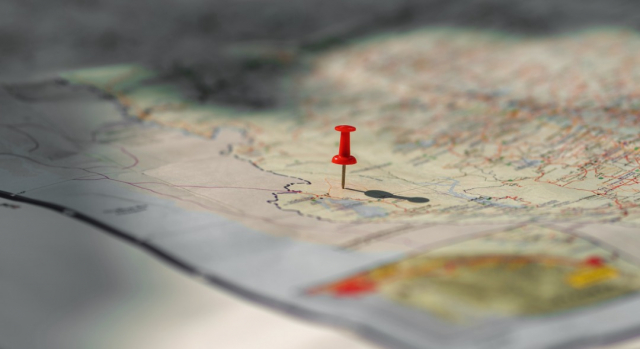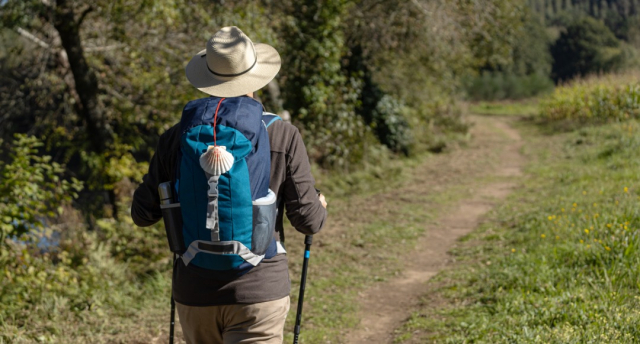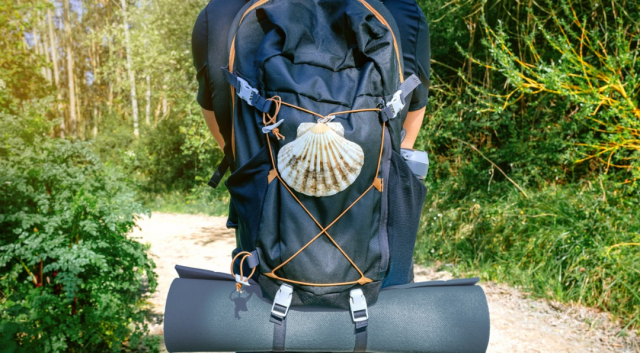Camino de Santiago from San Sebastián
Camino de Santiago from
We tell you everything you need to know to do the Camino de Santiago from San Sebastian: tips, secrets, where to sleep, what to see and how long it will take you to Santiago de Compostela.
- Camino de Santiago from Madrid
- Camino de Santiago from León
- Camino de Santiago from Sarria
- Camino de Santiago from Roncesvalles
- Camino de Santiago from A Coruña
- Camino de Santiago from Seville
- Camino de Santiago from Ponferrada
- Camino de Santiago from Burgos
- Camino de Santiago from Ourense
- Camino de Santiago from Bilbao
- Camino de Santiago from Oporto
- Camino de Santiago from Lisboa
- Camino de Santiago from Barcelona
- Camino de Santiago desde Pamplona
- The Camino de Santiago from Irun
- The Camino de Santiago from Astorga
- Camino de Santiago from Valencia
- The Way of Saint James from Saint-Jean-Pied-de-Port
- Camino de santiago from Viana do Castelo
- Doing the Way of Saint James from Zamora
- Doing the Way of Saint James from Zaragoza
- Doing the Way of Saint James from Alicante
- Camino de Santiago from Santander
- Camino Portugués from Coimbra
- Camino de Santiago from San Sebastián
- Camino de Santiago from Vigo: Guide of stages
- Camino de Santiago from Salamanca
- Camino de Santiago from Villafranca del Bierzo
- Camino de Santiago from Pontevedra
- Do the Camino de Santiago from Almería
- Camino de Santiago from Valladolid
- Doing the Way of Saint James from Navarra
Why do the Camino de Santiago from San Sebastian?
The Northern Way is one of the favorite routes for many pilgrims who want to complete the pilgrimage of the Camino de Santiago. Among the many options within the Camino del Norte, one of the most attractive is to start our journey in San Sebastian, thus being able to enjoy a complete pilgrimage through the Asturian-Galician coast.
With almost 200km to go, we will meet the requirements to apply for the compostela in Santiago. Also known as Camino de la Costa, as its name suggests, this route of Santiago winds through the Cantabrian coast, starting in Irun and ending in Compostela.
One of the strengths of the Camino del Norte lies in the spectacular beauty of its landscapes, shining with even more intensity if possible in those stages near the coast. However, we are talking about one of the most demanding routes within the Camino de Santiago. A real physical and sporting challenge only suitable for pilgrims who have been properly prepared in the weeks prior to the trip.
What should you take into account before doing the Camino from San Sebastian?
If you have already decided that the Camino del Norte is your dream route, now you should consider what is the best time of the year to do the Camino de Santiago. In winter the cold can be a real challenge to move; while in summer on the contrary the heat will be a real problem. That is why the choice of a suitable season in terms of weather is vital to make the journey as bearable as possible.
Spring and autumn are options to take into account, with a more than pleasant temperature that will give us a respite, also avoiding the crowds. Although in summer and even winter it may be easier to balance the dates, the truth is that we are talking about times when the presence of pilgrims is multiplied.
All the stages of the Way of St. James from San Sebastian
The Northern Way is one of the most beautiful and demanding of the Camino de Santiago and consists of 34 stages. Below you will find each and every one of the stages that make up this route, as well as a brief description of them:
- Stage 1: San Sebastian - Zarautz (22 km): The first stage is gentle and runs along the Basque coast. The most beautiful stretch is Getaria.
- Stage 2: Zarautz - Deba (22 km): In this stage the road becomes more demanding, as there are several slopes to overcome.
- Stage 3: Deba - Markina-Xemein (23 km): In this stage we cross the Oiz mountain, one of the hardest parts of the route.
- Stage 4: Markina-Xemein - Gernika (15 km): Short and gentle stage that runs through the valley of the Oka River.
- Stage 5: Gernika - Lezama (29 km): This stage is long and has some important slopes.
- Stage 6: Lezama - Bilbao (11 km): Short stage that runs through the residential neighborhoods of Bilbao.
- Stage 7: Bilbao - Portugalete (19 km): This stage crosses the Bilbao estuary and reaches the town of Portugalete.
- Stage 8: Portugalete - Castro Urdiales (29 km): Long and demanding stage along the Cantabrian coast.
- Stage 9: Castro Urdiales - Laredo (27 km): A gentle stage along the coast.
- Stage 10: Laredo - Güemes (32 km): Long and demanding stage along the Cantabrian coast.
- Stage 11: Güemes - Santander (26 km): This stage leads to Santander, capital of Cantabria.
- Stage 12: Santander - Santillana del Mar (37 km): Long stage along the Cantabrian coast and inland.
- Stage 13: Santillana del Mar - Comillas (22 km): A gentle stage along the coast.
- Stage 14: Comillas - Colombres (19 km): A gentle stage along the Asturian coast.
- Stage 15: Colombres - Llanes (21 km): A gentle stage along the Asturian coast.
- Stage 16: Llanes - Ribadesella (30 km): Long and demanding stage along the Asturian coast
- Stage 17: Ribadesella - Sebrayo (24 km): A demanding stage through the interior of Asturias.
- Stage 18: Sebrayo - Gijón (27 km): Long and demanding stage through the interior of Asturias and along the coast.
- Stage 19: Gijón - Avilés (27 km): Long and demanding stage along the Asturian coast.
- Stage 20: Avilés - Muros de Nalón (25 km): A demanding stage through the interior of Asturias.
- Stage 21 (continuation): This stage is short and smooth, with some gentle climbs and descents.
- Stage 22: Soto de Luiña - Cadavedo (16 km): Short and gentle stage along the Asturian coast.
- Stage 23: Cadavedo - Luarca (18 km): A gentle stage along the Asturian coast.
- Stage 24: Luarca - La Caridad (27 km): Long and demanding stage through the interior of Asturias.
- Stage 25: La Caridad - Ribadeo (19 km): A gentle stage along the Asturian coast and Galicia.
- Stage 26: Ribadeo - Lourenzá (29 km): Long and demanding stage through the interior of Galicia.
- Stage 27: Lourenzá - Gontán (28 km): Long and demanding stage through the interior of Galicia.
- Stage 28: Gontán - Vilalba (22 km): A gentle stage through the interior of Galicia.
- Stage 29: Vilalba - Baamonde (19 km): Short and gentle stage through the interior of Galicia.
- Stage 30: Baamonde - Miraz (24 km): Demanding stage through the interior of Galicia.
- Stage 31: Miraz - Sobrado dos Monxes (22 km): A demanding stage through the interior of Galicia.
- Stage 32: Sobrado dos Monxes - Arzúa (21 km): A gentle stage through the interior of Galicia.
- Stage 33: Arzúa - Pedrouzo (19 km): Short and gentle stage through the interior of Galicia.
- Stage 34: Pedrouzo - Santiago de Compostela (20 km): The last stage of the Way of St. James from San Sebastian is smooth and runs through the interior of Galicia to reach the Plaza del Obradoiro in Santiago de Compostela.
How to walk the Camino de Santiago from San Sebastian?
While it is true that the Camino del Norte can be done by bike, always taking into account the 200km to receive the compostela, or opt for the car route; we strongly recommend that you choose to do the Camino de Santiago from San Sebastian on foot. These are tough stages, no doubt, which will require a good physical preparation on your part, but ahead you have some of the most spectacular scenery of the Camino de Santiago.
Tips for doing the Camino de Santiago from San Sebastián
There are many tips to do the Camino de Santiago, but whether it is your first time or if you are a connoisseur of the Xacobean pilgrimage, there are some more useful than others.
The first and most important is undoubtedly the one related to footwear. And considering that we are going to walk a lot, dozens and dozens of kilometers daily, it is vital that our footwear is the best possible. Mountain boots or sneakers are perfect for the Camino de Santiago. Comfortable, with soles adapted to all terrains and also waterproof in case of rain or cold.
The second point to consider would be dedicated to the backpack on the Camino de Santiago. Our basic advice is that the weight of the backpack never exceeds 10% of your weight. In this way we will avoid any kind of pain in the back and we will make the journey in a more comfortable way. Do you think you might have some problems with the weight in the backpack? Don't worry. There are companies dedicated to carry your backpack from one hostel to another; also a very interesting option.
Where to sleep and where to eat?
Finding a place to sleep and eat to do the Camino de Santiago from San Sebastian is frankly simple. During all the stages of the Camino del Norte you have a good number of hostels, restaurants, bars, and of course hostels, hotels or pensions.
While it is true that enjoying the views and the scenery is one of the keys to the pilgrimage, so is the gastronomy of the Camino de Santiago. Diving into the typical dishes of each area is one of those pleasures that should not be overlooked. However, there are also more economical options, suitable for all budgets. Many restaurants and bars that you will find on the Camino de Santiago have a menu for pilgrims.
We can not fail to talk about rest, vital to be able to perform at each stage. Along the Camino del Norte you have options to sleep in public hostels, as well as private hostels, hostels or pensions. The former are undoubtedly the most economical option, although you will have to pay attention to their capacity. Without the option of reservations, these types of places only admit pilgrims on a first-come, first-served basis until all rooms are filled.
Just as it is important to prepare your backpack well for your trip, it is equally important to try to close the agenda and program the places to eat and sleep. This is the only way to ensure a smooth route and to avoid, as far as possible, any unforeseen events.
- Camino de Santiago from Madrid
- Camino de Santiago from León
- Camino de Santiago from Sarria
- Camino de Santiago from Roncesvalles
- Camino de Santiago from A Coruña
- Camino de Santiago from Seville
- Camino de Santiago from Ponferrada
- Camino de Santiago from Burgos
- Camino de Santiago from Ourense
- Camino de Santiago from Bilbao
- Camino de Santiago from Oporto
- Camino de Santiago from Lisboa
- Camino de Santiago from Barcelona
- Camino de Santiago desde Pamplona
- The Camino de Santiago from Irun
- The Camino de Santiago from Astorga
- Camino de Santiago from Valencia
- The Way of Saint James from Saint-Jean-Pied-de-Port
- Camino de santiago from Viana do Castelo
- Doing the Way of Saint James from Zamora
- Doing the Way of Saint James from Zaragoza
- Doing the Way of Saint James from Alicante
- Camino de Santiago from Santander
- Camino Portugués from Coimbra
- Camino de Santiago from San Sebastián
- Camino de Santiago from Vigo: Guide of stages
- Camino de Santiago from Salamanca
- Camino de Santiago from Villafranca del Bierzo
- Camino de Santiago from Pontevedra
- Do the Camino de Santiago from Almería
- Camino de Santiago from Valladolid
- Doing the Way of Saint James from Navarra
Routes
Blog
 How to get to Sarria to do the Camino de Santiago
How to get to Sarria to do the Camino de Santiago
 Descubre la magia del Camino de Santiago Portugués por la costa
Descubre la magia del Camino de Santiago Portugués por la costa
 5 tours culturales que puedes hacer en Galicia si decides hacer un alto en el camino
5 tours culturales que puedes hacer en Galicia si decides hacer un alto en el camino
 Doing the Camino de Santiago in June: What you should know?
Doing the Camino de Santiago in June: What you should know?
Information
Points of interest
Cities & Towns | Hostels | Lodgings | Restaurants | Saddlery | Doctors | Points of interest | Bikes workshop
Contact us | Privacy policy | Cookies policy | | Terms of use | Authorship | Web Map | Consentimiento
© Copyright LA VOZ DE GALICIA S.A. Polígono de Sabón, Arteixo, A CORUÑA (ESPAÑA) Inscrita en el Registro Mercantil de A Coruña en el Tomo 2438 del Archivo, Sección General, a los folios 91 y siguientes, hoja C-2141. CIF: A-15000649
Developed and managed byHyliacom


